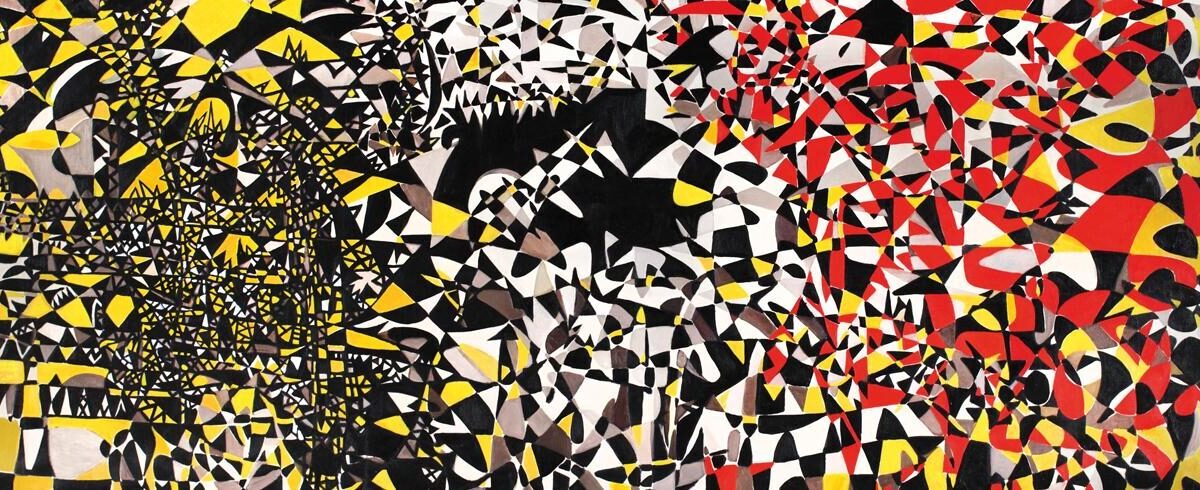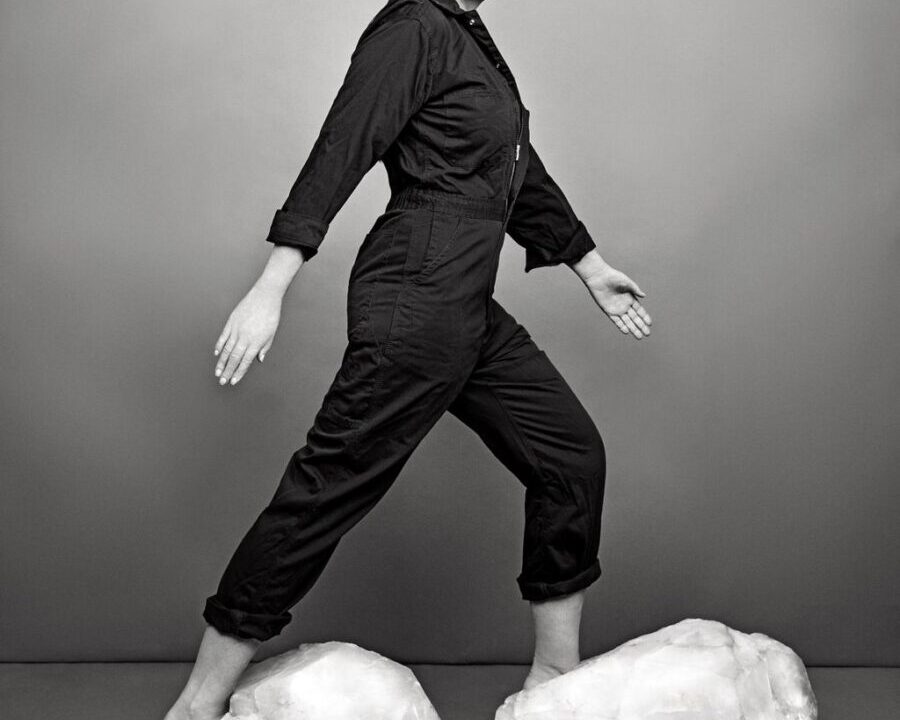The Life and Works of Fahrelnissa Zeid
Fahrelnissa Zeid was born January 7th, 1901 in Buyukada, the largest of the Princes’ Islands off the coast of Istanbul, and died September 5th, 1991. She had a privileged upbringing by an artistic family with exposure to literature, music, French, and the arts. Her life was turned upside down at age fourteen when her brother shot and killed her father. In 1919, she was one of the first women to enroll in the Academy of Fine Arts for Women in Istanbul, and is best known for her large-scale abstract paintings with colorful kaleidoscopic patterns.
This remarkable artist began drawing at a young age, and painted a portrait of her grandmother when she was a young teenager. She married novelist Izzet Melih Devrim when she was nineteen, and while traveling through Italy for their honeymoon, she was exposed to the works of the great European artists. They had three children together before divorcing. Zeid then married Prince Zeid bin Hussein of Iraq, who was appointed the first Ambassador of the Kingdom of Iraq to Germany in 1935.
She spent the next years traveling between Paris, Budapest, and Istanbul, immersing herself in her painting. Zeid became involved with the “D Group” of Istanbul, an avant-garde group of painters working in the newly formed Turkish Republic under Mustafa Kemal Atatürk. Although her association with the group was brief, exhibiting with the group gave Zeid the confidence to begin exhibiting on her own.
Major Exhibitions
Zeid cleared out the parlor rooms of her own apartment in Istanbul and hosted her first solo exhibition in 1945. After two more solo exhibitions at Izmir in 1945, and in Istanbul in 1946, she relocated to London when Prince Zeid Al-Hussein became the first Ambassador of the Kingdom of Iraq to the Court of St James’s. Zeid continued to draw and paint, turning a room in the Iraqi Embassy into her studio.
Beginning in 1947, Zeid’s art became more complex and her work transitioned from figurative painting to abstraction. Zeid was influenced by the abstract styles coming out of Paris in the post-war period. She uniquely fused her Persian, Byzantine, Cretan, and Oriental roots with concepts, styles and techniques of Modernism in her works.
Zeid had many famous admirers of her work, including Queen Elizabeth, who attended her exhibition in London at Saint George’s Gallery in 1948. Art critic Maurice Collis was wowed by that exhibition and they subsequently became close friends.
Over the next decade, living between London and Paris, Zeid made some of her strongest works, experimenting with monumental abstract canvases that immerse the viewer in kaleidoscopic universes through their heavy use of line and vibrant color. Zeid exhibited at Galerie Dina Vierny in 1953, showing several of her most recent abstract works such as The Octopus of Triton, and Sargasso Sea. The exhibition then traveled to the Institute of Contemporary Arts in London. In the 1950s, Zeid was at the height of her career. In this period, she became friends with a group of international artists such as Jean-Michel Atlan, Jean Dubuffet and Serge Poliakoff.
In 1958, Zeid convinced her husband Prince Zeid al-Hussein not to return to Baghdad as acting regent while his great nephew, King Faisal II, went on vacation as he usually did. The couple went to their holiday home on the island of Ischia in the Gulf of Naples. On July 14, 1958, there was a military coup in Iraq and the entire royal family was assassinated. Prince Zeid and his family narrowly escaped death, and they were given only 24 hours to vacate the Iraqi Embassy in London. The coup halted Zeid’s career as a painter and hostess in London.
Zeid and her family (without household help) moved to London where, at the age of fifty-seven, she cooked her very first meal. This experience in the kitchen inspired her to begin painting on chicken bones, later creating sculptures from the bones cast in resin, a process called “paleokrystalos.” As she grew older, she began to move away from abstraction, and started to paint portraits of her family and others close to her.
A few years later, her youngest son, Prince Raad, married and moved to Amman, Jordan. In 1970, Prince Zeid Al-Hussein died in Paris and Zeid moved to join her son in Amman. She founded The Royal National Jordanian Institute Fahrelnissa Zeid of Fine Arts in 1976, and for the next fifteen years she taught and mentored a group of young women until her death in 1991.
Critics praised her exhibitions, which highlighted her role as a pioneering Turkish modernist who challenged a Eurocentric male-dominated art world. While abstract expressionism was exploding in America and abroad, Zeid held her own with a formal language radically distinct from her Western contemporaries by including references to Byzantine mosaic art, Islamic architecture and philosophy.
Museum Ludwig held her first retrospective in the western world in 1990. In 2017, Tate Modern in London organized a major retrospective of the artist. The central gallery of the exhibition hosted large-scale, abstract paintings of Zeid from the late 1940s and 1950s. One of the highlights was her five-meter work titled My Hell (1951) that was first shown in the UK in her 1954 exhibition at the ICA London. The last gallery was devoted to portraits that Zeid concentrated on in her last years in Amman, as well as her resin sculptures. From Tate Modern, the exhibition traveled to Deutsche Bank KunstHalle in late 2017, and to the Sursock Museum in Beirut in Spring 2018.
Honors & Accolades
Her biography Fahrelnissa Zeid: Painter of Inner Worlds, written by Adila Laïdi-Hanieh, a former student of Zeid’s, was published in 2017 to coincide with the retrospective exhibition at Tate Modern. Charles Estienne, a prominent French art critic and curator became a major proponent of Zeid’s.
Value at Auction
In October 2012, a number of her paintings were sold at auction by Bonhams for a total of
£2,021,838, setting a world record for the artist. Zeid’s largest single work sold at auction, Towards a Sky, sold for just under one million pounds in 2017.
Add the Works of This Artist to a Private Collection
Keep an eye out for online and live auctions to add the art of Fahrelnissa Zeus to a private collection.
Selling the Works of Fahrelnissa Zeus
Do you have works by Fahrelnissa Zeus that you are interested in selling, appraising or cosigning? Call Joshua Kodner today, and ensure you receive the true value of your property.





